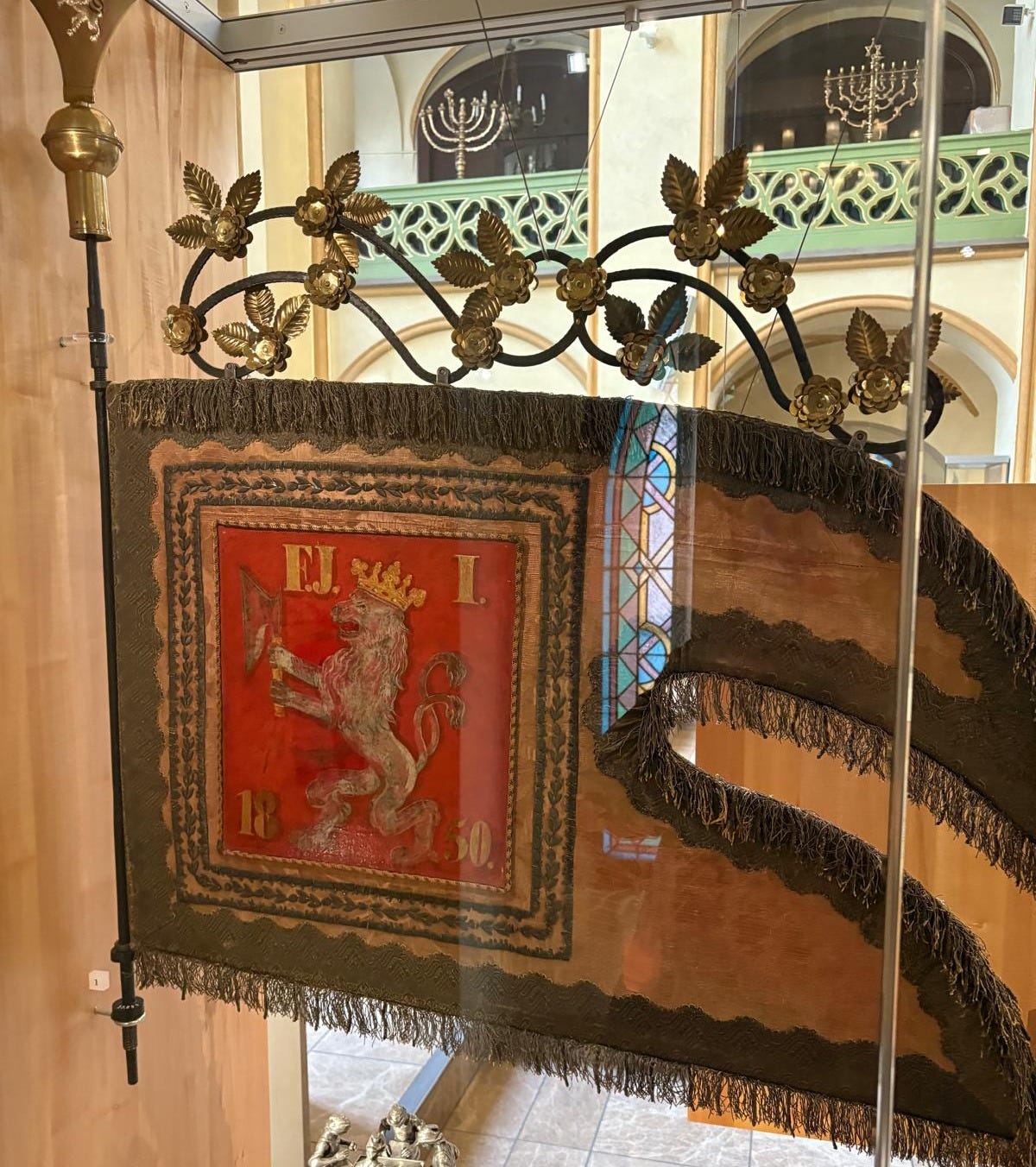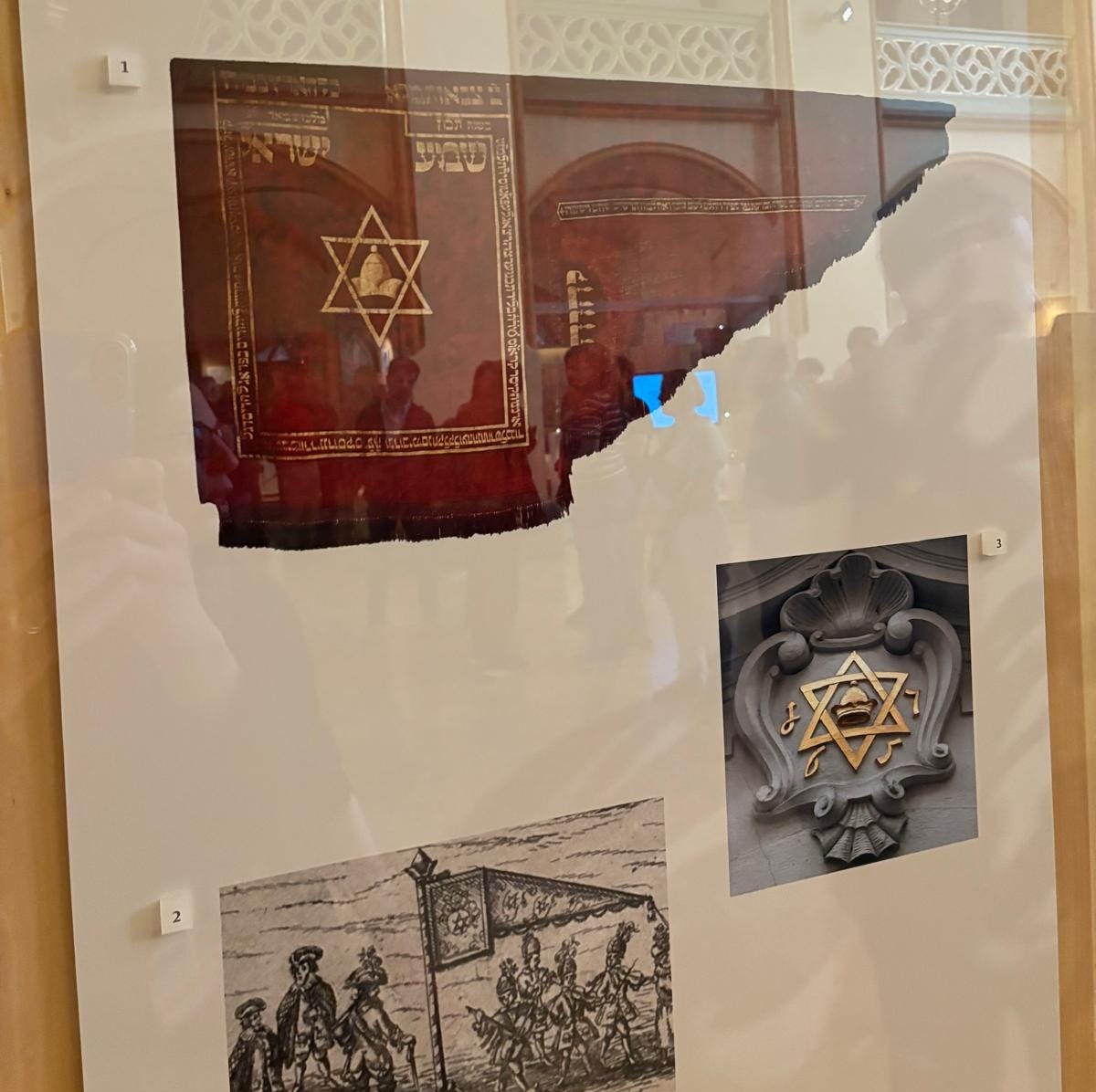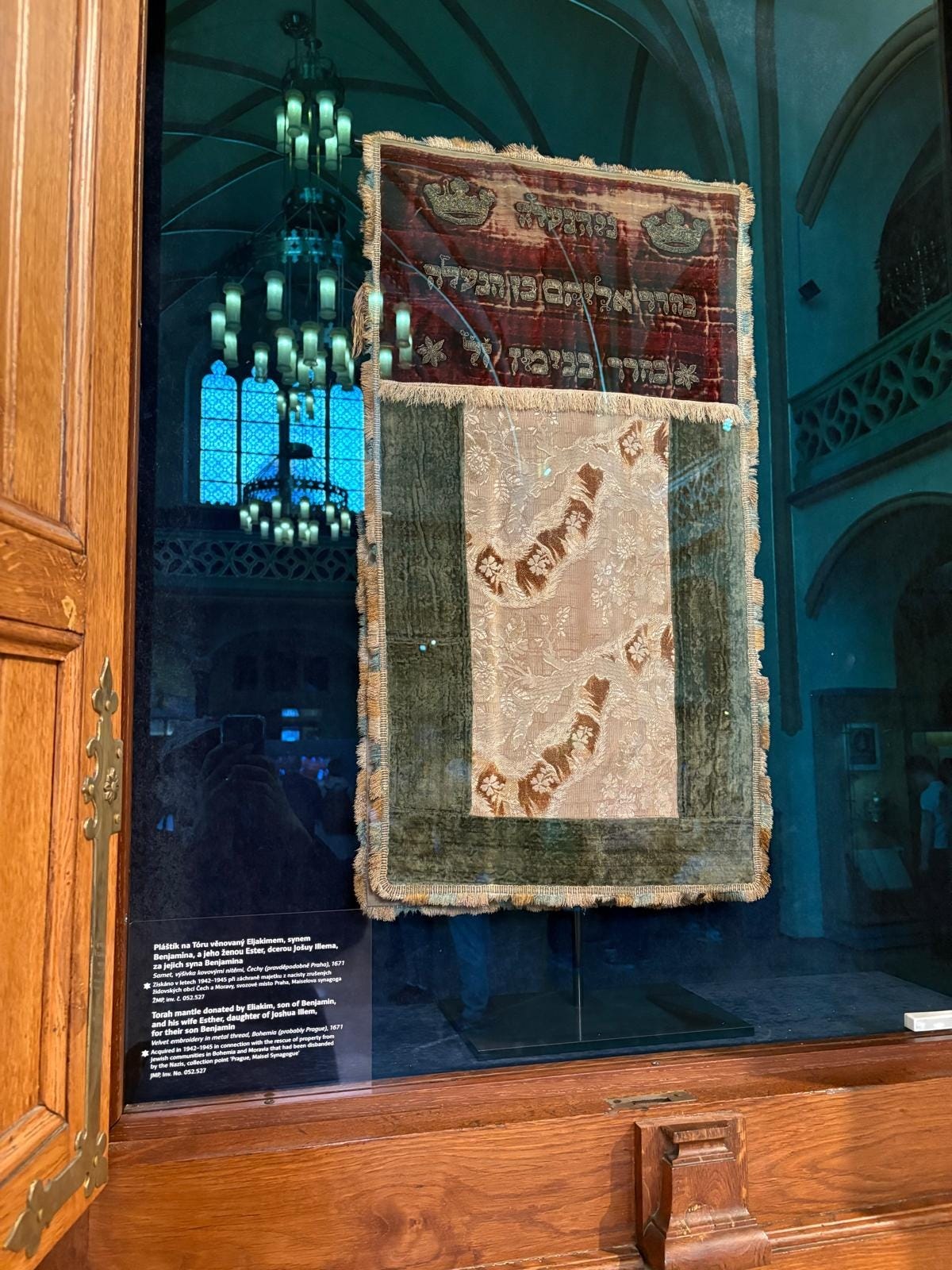Mystery Solved??? The Connection Between Flags and Simchat Torah
The Maisel Synagogue in Prague (Synaprague?)
Part 1 - Solving a Mystery
One of the questions I ask myself every year on Simchat Torah is “why do the kids have flags”? We don’t make flags for any other holiday. Is it just so that the kids have something to do while the grown-ups hold the Torah? But then shouldn’t the adults also have flags because there are never enough Torahs for everyone to hold one? The flags are also non-standardized, like there isn’t a “Simchat Torah” flag though the blue one with lions surrounding the Aseret Hadibrot comes pretty close. When we dance at things like weddings, we don’t have flags. So it is just a weird phenomenon that I shrug my shoulders at and wait to ask the question again the next year.
If you’re reading this post, you probably came to it through my main post about my trip to Prague. It was here, in Prague, that a plausible answer to my admittedly pointless conundrum may have been found.
The existence of the Prague Jewish community was somewhat unique in that, for the most part (emphasis on most - edicts were put in that were canceled such as only one child per family could marry when Jewish and specific wear on clothes to identify them as Jews — or that they couldn’t have a shul near churches, though one shul was built right below the castle…you get the point), they were never terribly discriminated against and at times even protected and on rarer occasions even part of the upper-class. This meant that, compared to many other Jewish communities, they were relatively affluent and weren’t restricted from building and providing the religious infrastructure needed to have a vibrant Jewish community.
One of these individuals, Mordecai Maisel, was a rich Jew with connections to the Prague leadership who used his fortunes to support the Jewish community and built the shul which now houses the part of the Jewish Museum of Prague which contains the background and history of this city.

All of this brings me to the dedication of the Maisel synagogue on Simchat Torah in 1592. Which was probably just your average Simchat Torah, but with an extra special kiddush following the aliyot to the Torah. But it was this combined with other artifacts in the shul that helped me put everything together. See another large aspect of the Prague Jewish community was the different guilds that existed within the city. These guilds existed until the mid-1850s when they were abolished among industry reforms. Also among the collection was a stencil which showed the procession of the various guilds in the city (including Jewish ones) upon the coronation of a new king. Each and every one of these guilds had a flag of its own.

So here is what I think happened. Maisel holds the dedication of his shul on Simchat Torah 5353. Having been unable to finance the shul wholly on his own, he requests assistance from the various guilds in the city to contribute to the effort. When the shul is finished, the guilds arrive - on Simcha Torah - with their flags to celebrate the occasion and to advertise their participation in the construction. Obviously, there is dancing which takes place (and flags are a big part of all processions in Prague) and the flags are waved while the dancing takes place. In subsequent years, the guilds are invited back to celebrate the anniversary of the dedication (and obviously to be sponsors of the kiddush) and the flags appear once again. Over the next three centuries, the tradition of flags spread across the Jewish diaspora and are forever associated with the holiday.
Okay, okay, there is a lot of conjecture here, but to me this is entirely plausible and I think can answer a lot of my questions in the introduction. My question still doesn’t matter in the grand scale of things, but at the very least I now have a good conversation piece to bore people with while waiting for hakafot to end.
Part 2 - The Rest of the Shul/Museum
The rest of the shul/museum had a lot of cool artifacts. The fact that there were several A-list rabbinic figures over the years in this town, in addition to the relatively privileged status the Jews had in the city, meant that preservation of Jewish items in the city was quite good. Then, because they were treated as art by the community at large, the Nazis also treated these items as art and then stole them when they invaded. They were recovered after the war (presumably by The Monuments Men - paperback) and then put on display in the shul. As such, the shul has Torah covers and manuscripts that are on display.
One thing I found very interesting about the Torah covers is that they weren’t sewn all around like ours are today. Instead, they are much more reminiscent of tzitzit, in that they just kind of drape over the scroll instead of covering it on all sides. There was also a manuscript on display which contained a selicha/kinna for one of the tragedies that occurred in Prague (I didn’t take a picture of the description, whoops). There was also a long recording about the languages spoken by the Jews in Prague. Because they were often part of the elite, they ended up speaking mostly German, instead of Czech or even really Yiddish.
Overall, this was a very enjoyable and educational museum to visit. If you only have time to visit one shul while you are in Prague, I think this one, and not the Spanish Synagogue should be your choice, as you will end up learning a lot more about the Jews who lived there.




